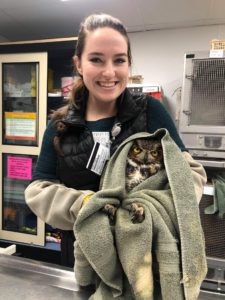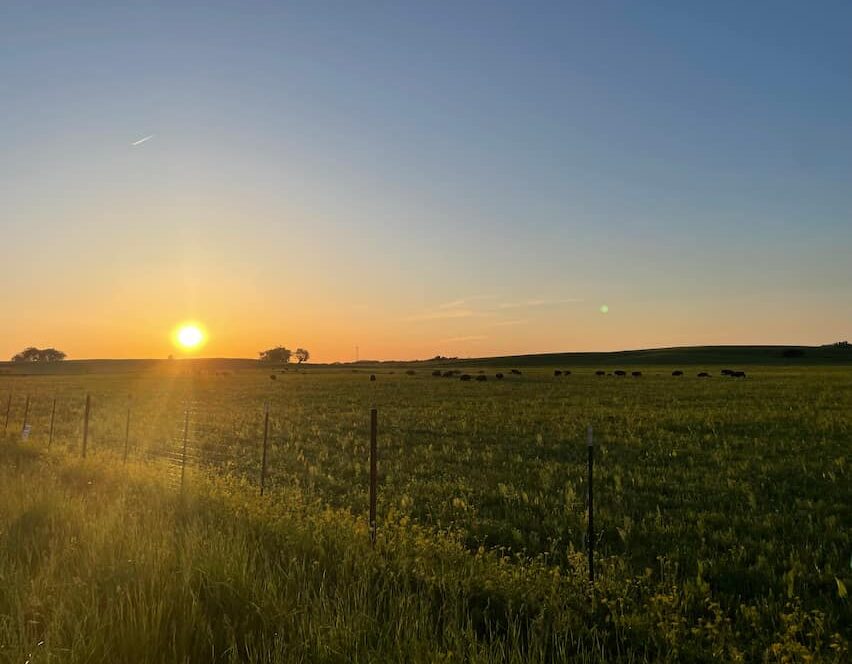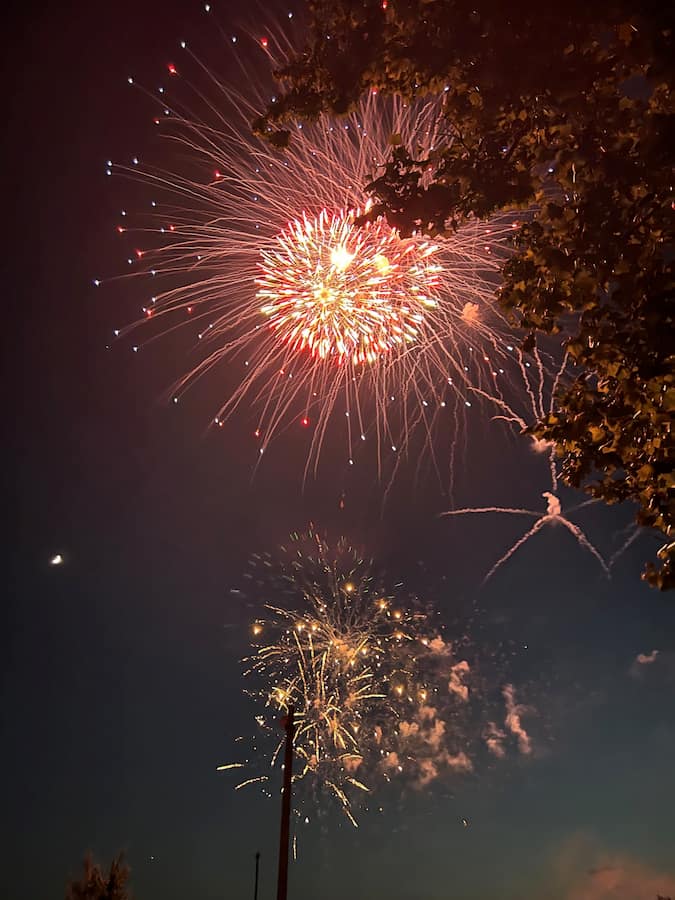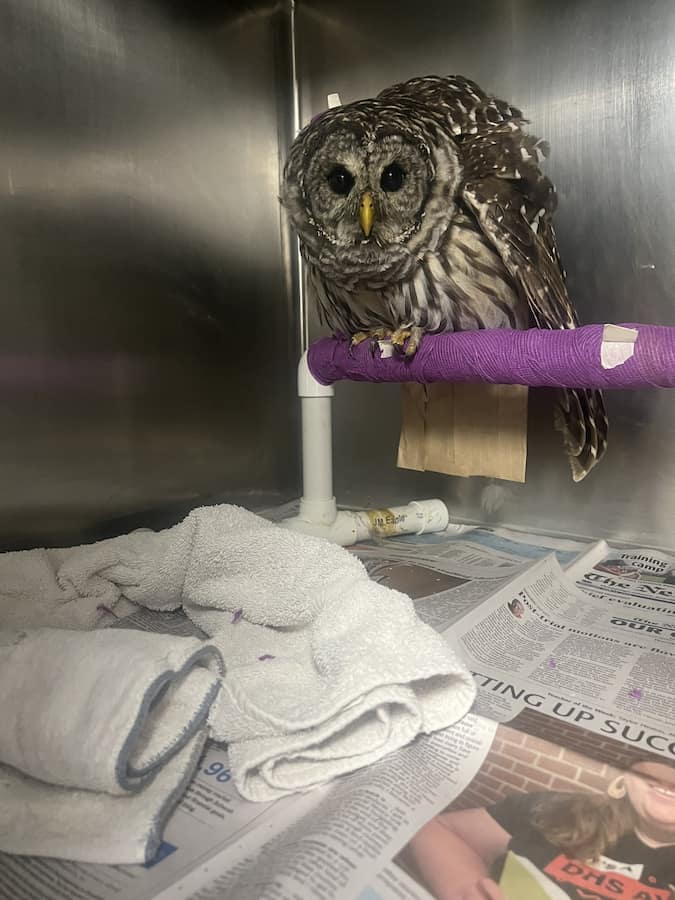Every new animal that walks (or flies) through our doors presents us with a different sort of adventure! Some animals have an easy fix and simply need supportive care, such as warming and rehydration, to get back on their feet. Others, such as the owl in this article, need a bit more of a hands-on approach.
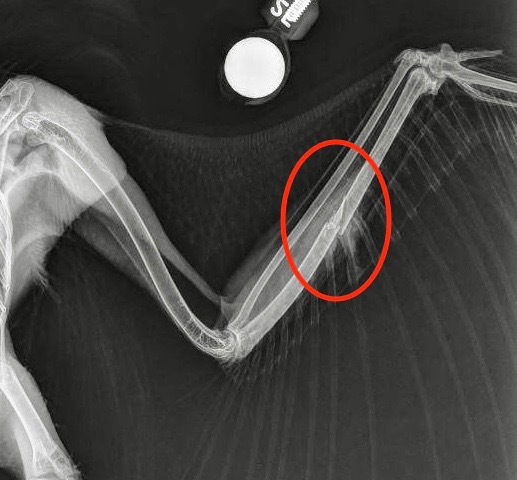
This great horned owl presented to my team on December 16th after being found in the grille of a truck with a fracture in his left wing, mild dehydration, hemorrhage (bleeding) in one eye, and a pale plaque on his tongue. On first examination, we noted that he was quiet but alert. After some initial stabilization, we obtained radiographs (x-rays) to evaluate his fractured wing and determine if it could be corrected with surgery. As you can see from the red circle in his radiograph below, the fracture occurred in the middle of his left ulna (the bone between his elbow and wrist). Fortunately for our owl friend, this type of break is very fixable with surgery!
Our treatment plan included pain medication (fractures are painful in birds, just like they are for us!), an anti-inflammatory medication for his fracture and his eye, and fluid therapy to correct his dehydration. Surgery was in his near future, as well as further testing of his tongue plaque to determine what treatment, if any, was necessary.
The surgery went well, with our zoo medicine resident Dr. Joanna Webb placing pins and a connecting bar to secure the fracture in place for optimal healing. Several of our team, comprised of veterinary and undergraduate students, got to observe and assist with all aspects of the procedure, including monitoring anesthesia and helping with the surgical procedure itself! With his fracture stabilized and other conditions corrected, 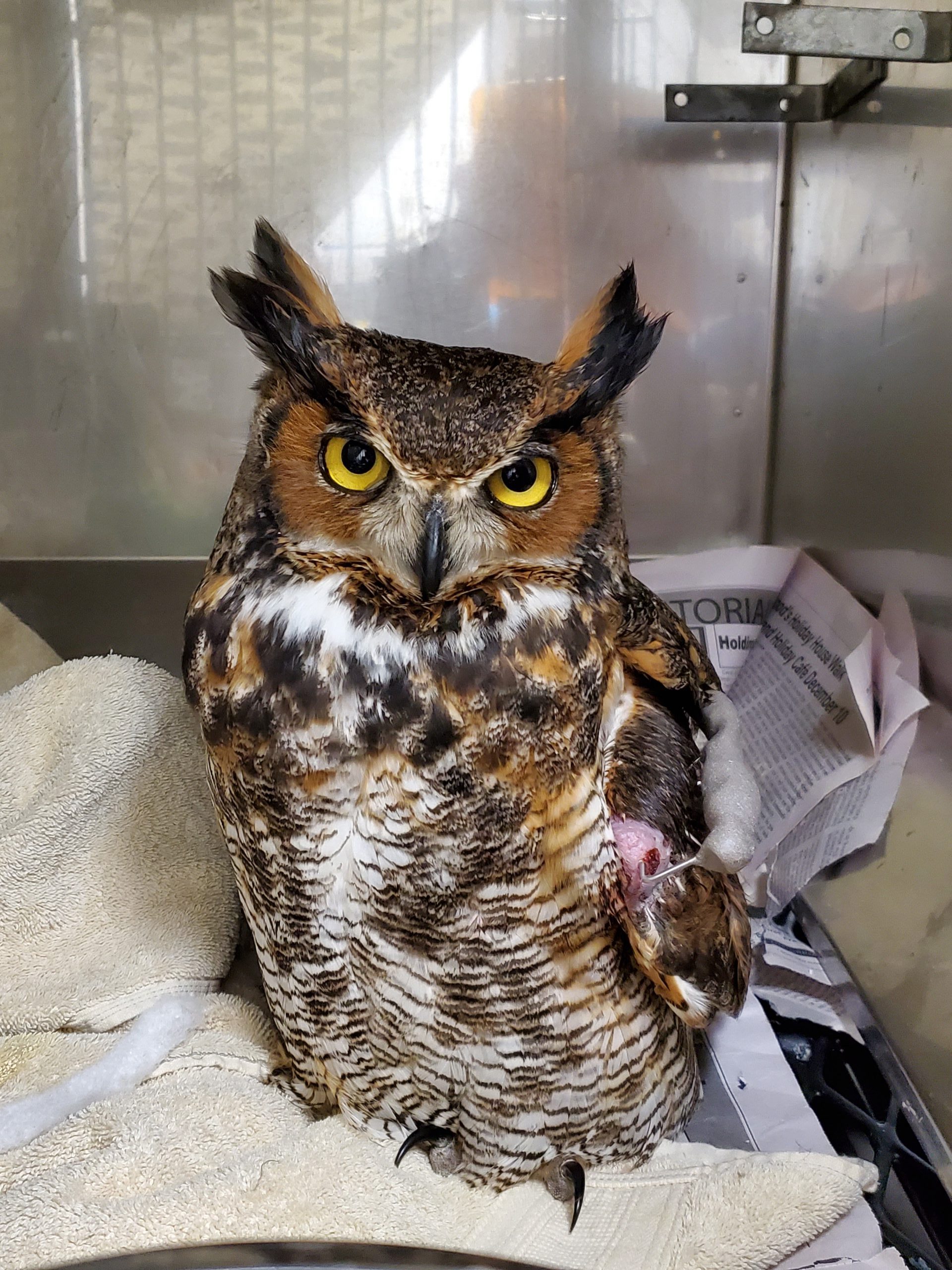 our owl quickly showed us he was feeling better. While we love to see our wildlife patients regaining their feisty nature while in the clinic, sometimes the spirited behavior of these animals can create situations that are detrimental to their care. The pluckiness of our patients also ensures we customize their care to each individual patient, often having to get creative about our approaches to ensure excellent care. As a prime example, this owl decided he did not like the pins in his wing, and subsequently pulled out some of his hardware prematurely!
our owl quickly showed us he was feeling better. While we love to see our wildlife patients regaining their feisty nature while in the clinic, sometimes the spirited behavior of these animals can create situations that are detrimental to their care. The pluckiness of our patients also ensures we customize their care to each individual patient, often having to get creative about our approaches to ensure excellent care. As a prime example, this owl decided he did not like the pins in his wing, and subsequently pulled out some of his hardware prematurely!
This early pin removal meant we had to schedule a second surgery to stabilize his wing fracture and ensure appropriate healing. In the interim, the owl’s behavior continued to return to display his appropriately spirited nature. Concurrently, he became intolerant of a normal wing wrap, a bandage we commonly utilize to support a wing fracture until it can be surgically corrected. In order to get him the care and support he needed for his wing fracture, WMC creativity was necessary. The team added bandage tape tabs on his new wing wrap to allow him something to tear at without harming his necessary wing wrap. This trick worked like a charm, proving to be the distraction he needed to leave his real bandage alone! His second surgery was again a success, and this time we knew we would need to keep using a wing wrap to protect the pins during healing. Our team got quite a bit of extra wing wrap practice with this patient, as he continued to tear at it thereafter. In the end, the wraps proved successful at protecting his fracture and surgical sites.
All specific tests ran on the owl’s tongue plaque came back negative for any concerning diseases and all evidence pointed to a past trauma or infection that had left a scab behind. With the input of the veterinarians at the WMC, the team elected to use a technique called benign neglect for this patient’s tongue plaque. Additionally, the bleeding in his eye, likely the result of trauma initially, required careful monitoring to ensure proper healing. The body has incredible healing skills, and under our watchful eyes with minor tweaks to his care along the way, we were confident that the issue could resolve well without additional medical intervention.
In the weeks following his surgery, this owl’s spirit continuously increased, he became fully hydrated, his eye returned to normal function, and the plaque on his tongue went away completely! With new radiographs, his fracture looked well on its way to full recovery, and we removed the pins and connecting bar. One important aspect of any orthopedic surgery, like a fracture repair, is physical therapy on the affected limb. With our wildlife, we will do passive range of motion, which is gently bending and stretching the joints of the affected limb for him. We perform this procedure with the animal under sedation to remove as much stress as possible while still helping the wing to heal properly.
After being in our care for six weeks, our owl friend had made a wonderful recovery! The final step in his treatment was to spend some time with a licensed wildlife rehabilitator to ensure he had full flight capabilities as a predator species. On January 27th, we transferred him to one of our incredible rehab partners to finish his care and release him back into the wild.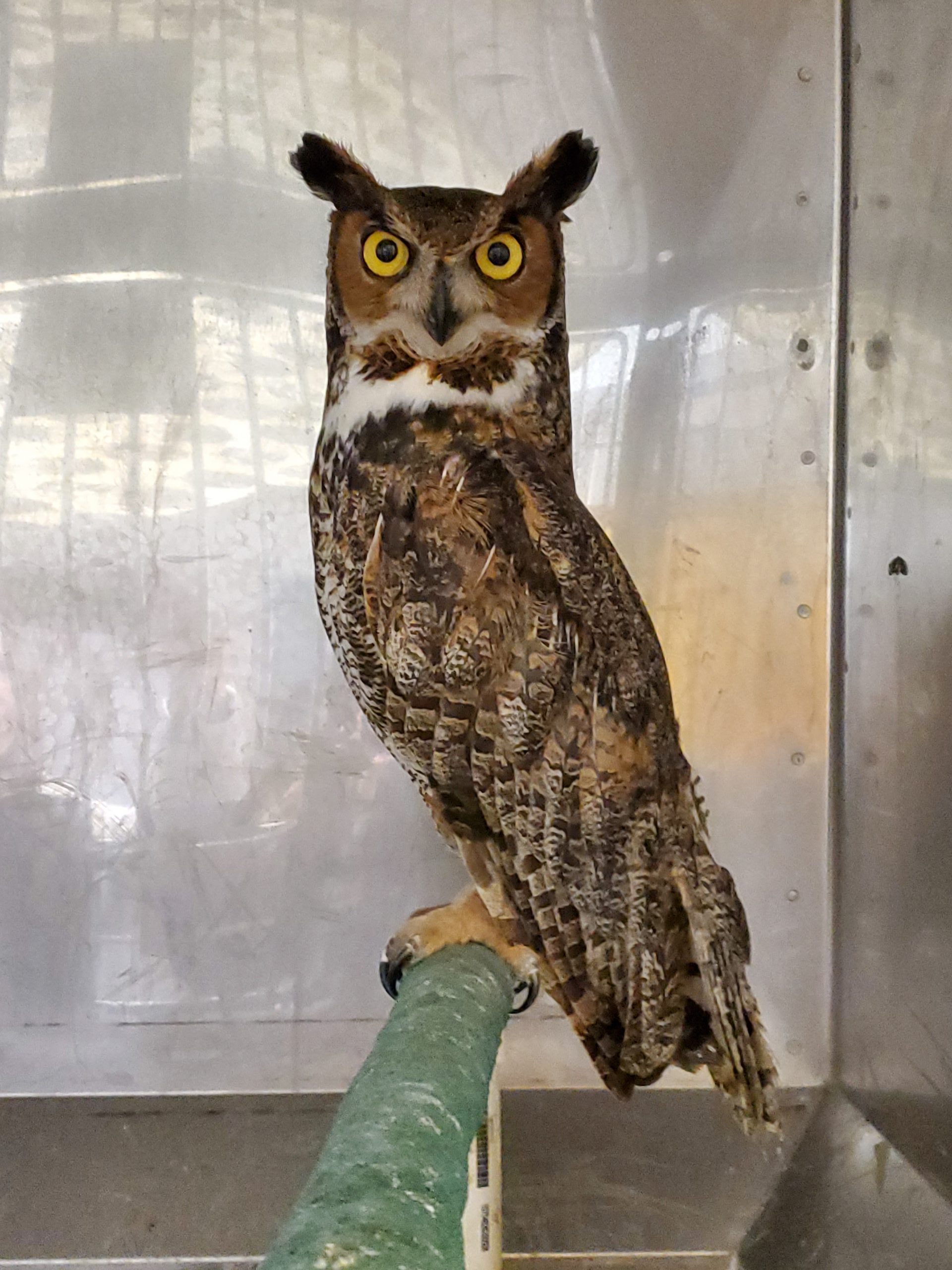
This case was incredibly rewarding for every individual involved. He kept us on our toes, from the medical aspect of diagnosing, managing, and treating of his wounds, to the creative aspect of “how do we keep this wing wrap on?!?” We are always excited to see our patients succeed, and this great horned owl is a perfect example! We hope you enjoy hearing about the adventures we have with our wildlife patients just as much as we enjoy having them. Whenever you see an injured animal in the wild, you can rest assured that our teams are well equipped and excited to handle every one that enters our hospital!
To learn more about our patients, get updates on activities in the Wildlife Medical Clinic, and to learn how you can help our mission and wildlife in your area, visit our website (https://vetmed.illinois.edu/wildlife/) or check us out on Facebook (@UIWMC).
By Jamie Booth, Class of 2023


